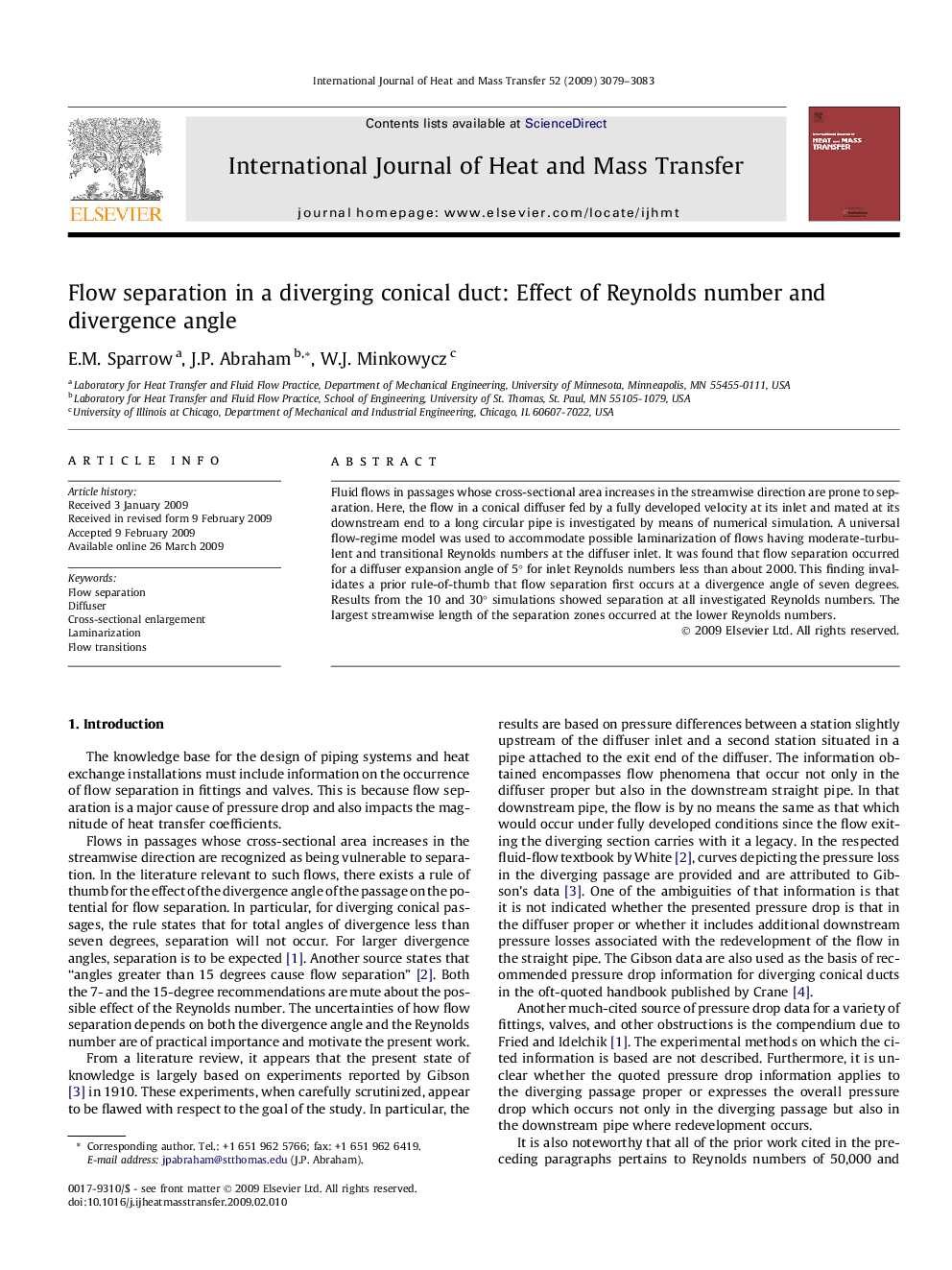| Article ID | Journal | Published Year | Pages | File Type |
|---|---|---|---|---|
| 661972 | International Journal of Heat and Mass Transfer | 2009 | 5 Pages |
Abstract
Fluid flows in passages whose cross-sectional area increases in the streamwise direction are prone to separation. Here, the flow in a conical diffuser fed by a fully developed velocity at its inlet and mated at its downstream end to a long circular pipe is investigated by means of numerical simulation. A universal flow-regime model was used to accommodate possible laminarization of flows having moderate-turbulent and transitional Reynolds numbers at the diffuser inlet. It was found that flow separation occurred for a diffuser expansion angle of 5° for inlet Reynolds numbers less than about 2000. This finding invalidates a prior rule-of-thumb that flow separation first occurs at a divergence angle of seven degrees. Results from the 10 and 30° simulations showed separation at all investigated Reynolds numbers. The largest streamwise length of the separation zones occurred at the lower Reynolds numbers.
Related Topics
Physical Sciences and Engineering
Chemical Engineering
Fluid Flow and Transfer Processes
Authors
E.M. Sparrow, J.P. Abraham, W.J. Minkowycz,
